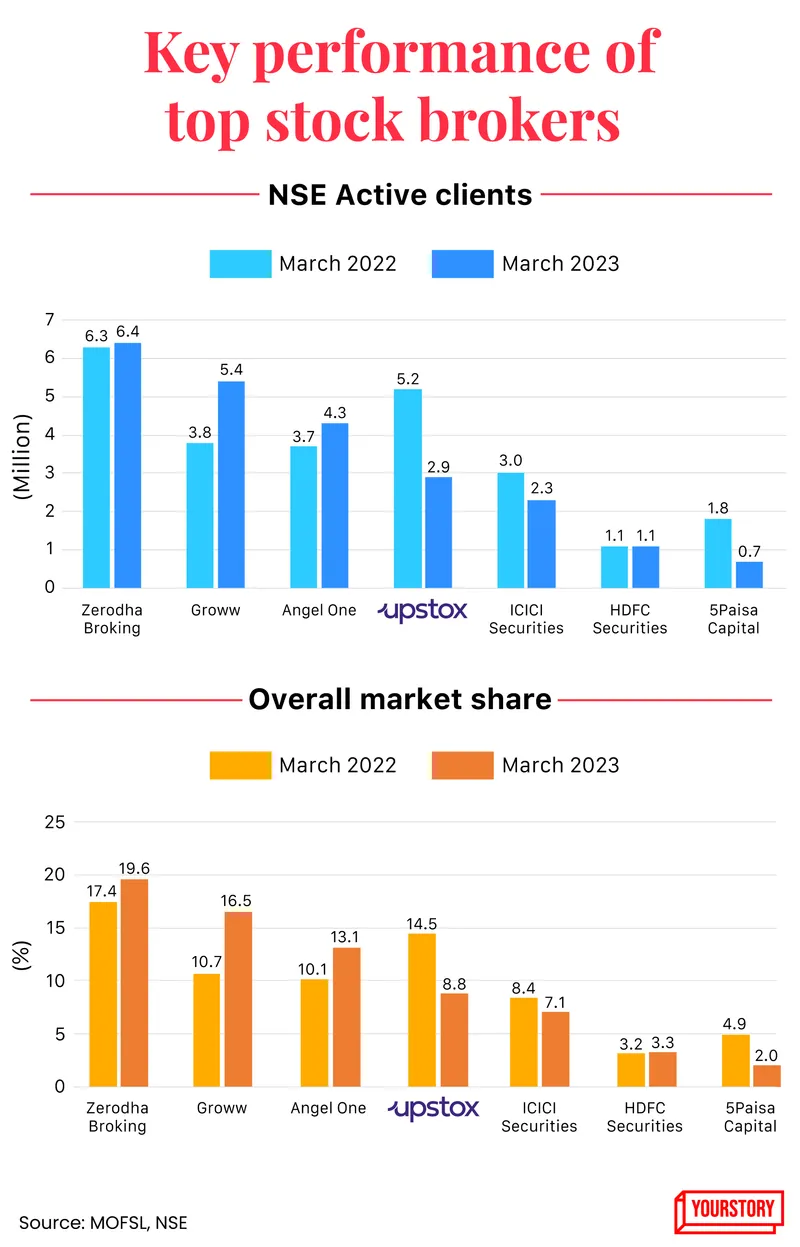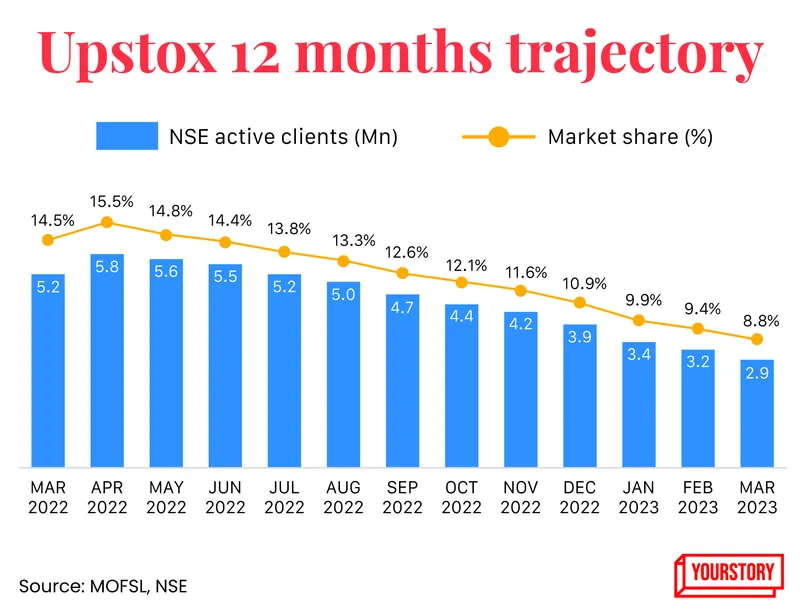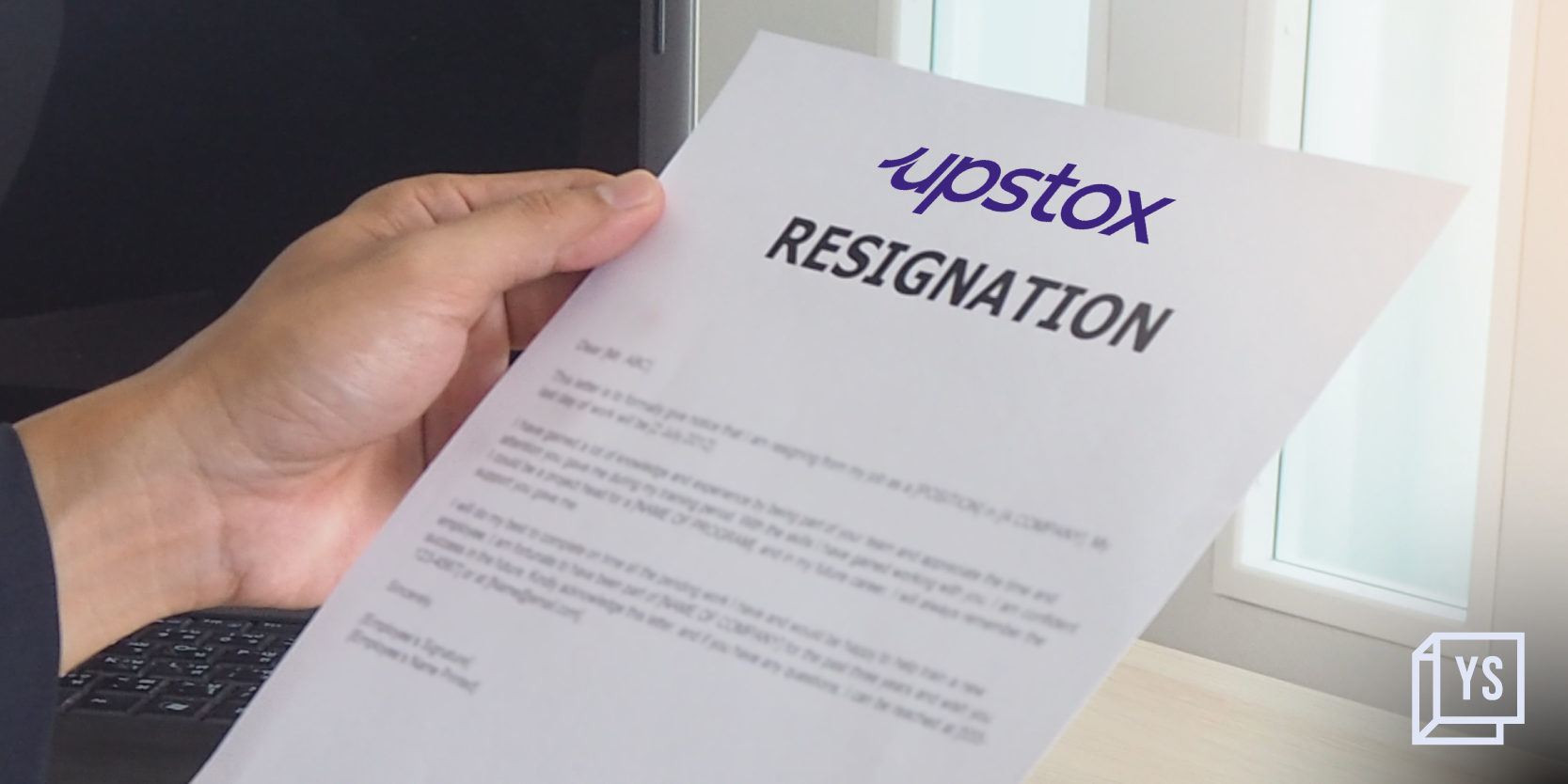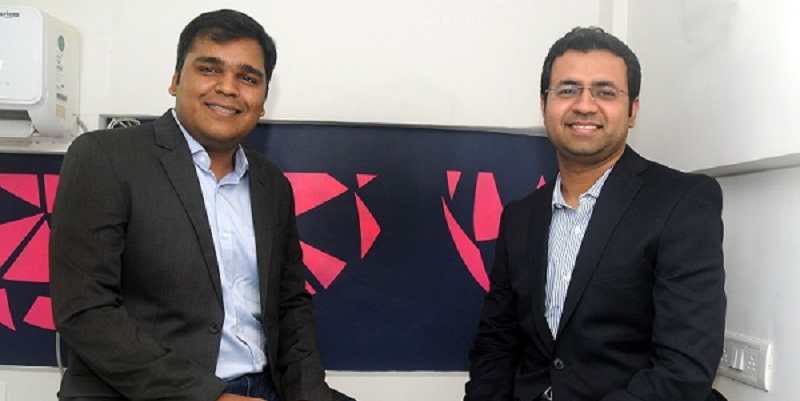An upheaval at Upstox: Leadership exits, strategy U-turns, user churn
The Tiger Global-backed online broker has seen at least half-dozen senior-level departures over the past year, as it tweaked its business strategy and abandoned its US expansion plan, while also grappling with rapidly declining user numbers.
Key Takeaways
- At least a half dozen senior executives have exited Upstox in the past year or so, including C-suite leaders who left in March this year.
- The online broking sector in India is going through a rough patch, but while Zerodha, Groww and Angel One have gained market share and users, Upstox has registered among the steepest declines.
- The company has decided to pause plans to expand to the United States and instead double down on strengthening its position in the India market.
In just the past two months, ’s chief technology officer, chief human resources officer, and chief growth officer, have all left the company, the culmination of multiple factors including, according to insiders, founder overreach.
The C-suite departures add to a series of other senior-level exits over the past year, including at least a couple of leaders leaving within two-three months of joining the company.
Four former senior executives YourStory spoke with flagged a lack of autonomy undermining the authority of leaders in running their departments—a not-unheard-of problem in founder-driven organisations.
Also, critical changes in strategy, including a decision to pause plans to expand to the United States, necessitated a rethink on a few top hires.
Among them are Silicon Valley-based Jayant Chauhan, who had joined as Senior Vice President-Finance in January last year only to leave two months later; and Dallas-based Thippesha Dyamappa, whom CEO Ravi Kumar in an interview with YourStory acknowledged as the company’s senior-most hire.
Dyamappa exited Upstox in March after serving as CTO for nearly two years, becoming the latest top-level executive to leave the company, which is backed by industrialist Ratan Tata. Kumar said Dyamappa will continue to be associated with Upstox as a consultant.
The senior departures come as the broking sector in India struggles through a rough patch, with market leader Zerodha and Upstox too warning that the ongoing market volatility would affect growth.
That said, Zerodha, Groww, and Angel One have gained in terms of market share and active users, but not Upstox; it has registered among the steepest declines, making the senior-level exits more worrisome.
The company was last valued at $3-3.5 billion when it raised funds from Tiger Global, BlackSoil, Stride Ventures, and InnoVen Capital in November 2021.
A sponsor for the Indian Premier League (IPL) cricket tournament, Upstox has also raised funds from Indian cricketer Shikhar Dhawan, American footballer Larry Fitzgerald, and US-based IntraEdge Founder and CEO Kal Somani, according to a MoneyControl report in September.

A series of short stints
“The top hires by the company were heavy resources. Upstox hired them with an aggressive plan (but) without forethought and then didn’t know what to do,” said a former senior executive.
“There were major issues with autonomy and some (the leaders) refused to bow and scrape while others didn’t find any purpose, making it easier for them to walk away.”
Kumar told YourStory over an internet call that most of the senior-level exits were for personal reasons, while acknowledging that a few were likely because of the company’s changed priorities.
“Our business model has changed… Two years ago, we hired some CXOs that were globally based because we had plans of going abroad and expanding to the US,” he said.
“But these past couple of years have been so exciting on the India side that we decided to just forget about the global expansion and completely focus on the India growth story.”
In a statement issued to YourStory following the interview with Kumar, a spokesperson for Upstox said the company had decided to pause its US expansion plans.
Among senior executives who recently resigned from Upstox are Sudeep Ralhan, who had joined as CHRO in May last year and left in March this year, and Harish Narayanan, who also left in March after getting on board as Chief Growth Officer in February last year.
Sami Alam, who was Senior Director of Engineering, also left in March this year after about two years with the company. Sriram Krishnan checked out in April last year after serving just about four months as Vice President-Information Security.

“They all came from very strong backgrounds and had joined with great enthusiasm. However, it all fizzled out (following) disagreements with the management (read: founders) over running their respective departments,” said one of the former senior executives mentioned earlier.
“Their demands were knocked out, budgets were not approved for critical activities, (and there was) no logical reasoning behind the decisions,” this person added.
A slowing market
Multiple people YourStory interviewed for this article blamed a culture of interference and micromanagement by the founders for the senior-level exits. For obvious reasons, they all spoke on condition of anonymity.
Kumar, expectedly, rubbished this, asserting multiple times during the conversation that Upstox had among the lowest attrition rates in the industry (16-24% in the last 3 years, the company said in the follow-on statement to YourStory).
“We have over 600 employees… this past year we added over 200 employees… and (in) the past quarter alone, over 40 people have joined,” Kumar said, adding that the company was registering strong growth financially as well.
“This past year has been incredible for us. We grew revenue (by) almost 40%, significantly more than our peers. And we’re also a combined profitable business now. This past quarter, Q4, we generated almost Rs 130 crore of operating cash,” he said, without providing specific revenue and profit figures.
From about 5 million customers in 2021, Upstox rode the lockdown-induced interest in stock trading to double its user count to about 10 million last year.
For the 2022-2023 financial year, it targetted an additional 20 million-30 million users. But, according to Kumar, the company’s still at about 11 million users.
Revenue growth is expected to be slower, particularly as compared with Upstox registering a threefold leap in operating revenue in FY 2020-21, and about a 100% jump in FY 2021-22 to Rs 765.6 crore.
“With a total revenue of over Rs 1,000 crore, Upstox reached breakeven in FY 2023,” Kumar said.
In an interaction with YourStory in February, Co-founder Shrini Viswanath had said Upstox would be profitable at the net level in less than two years.
Chaos in tech
Until recently, Upstox had about a half dozen senior executives overseeing various functions in its tech team, including CTO Dyamappa and Sami Alam, both of whom have since exited the company.
Senior directors Vasudev Sharma and Aditya Khambampati exited between September and December, as per their LinkedIn profiles.
A few company executives said the tech team was pushed to meet tough targets, with one person saying a culture of “cutting corners to grow too fast” risked destabilising the system and had become a bone of contention between some tech leaders and the founders.
“Projects were given to be completed (almost) overnight. Everyone slogged. Next day, (the projects) were crushed without any reason or rationale. There was a lot of burnout with such experiments, some frivolous,” said an employee with the Upstox tech team, also declining to be identified.
Some former employees also alleged instances of data breach, following which budgets were requested to be increased for improving safety measures.
“These issues kept happening and nothing changed despite feedback, which unfortunately never went down well with the management team (read: founders),” a former Upstox senior executive said. “There was no intent to improve or secure things, but just breakneck (rush to) roll out products.”

Dyamappa, now in his role as an adviser to the founders, said the Upstox tech team currently has about 270 full-time employees and about 30 contractors, down from about 400 people two years ago.
“When I joined in 2021, the in-house team was very small. We had about 400 people, of (whom) the majority were contractors. As we started focussing on scale, we structured the team, let go of contractors, and focussed on building in-house capabilities,” Dyamappa said over a phone interview, adding that he left Upstox for personal reasons.
Dyamappa also confirmed the data breach without giving specifics, but said it had happened before he joined the company.
“That’s why I was brought in. Since then, we have invested heavily on operations and security, and no data breaches were reported in my tenure,” he said. “There is absolutely zero tolerance on cutting corners for security.”
Current state of affairs
Upstox seems inclined to remain a founder-driven organisation, with Kumar insisting that the company never handed out CXO titles except for Dyamappa as CTO.
For long, co-founder Shrini Viswanath has been leading the tech department, while the other co-founder, Kavitha Subramanian, has led the marketing and HR operations.
Upstox did not provide details on who oversees specific functions at the company.
“We are very lucky that we have three founders at Upstox,” Kumar said. “There’s a tremendous amount of bandwidth we have at the top, and we are very actively engaged in the business… we look forward to becoming a bit more founder-led.”
(Feature image and infographics by Winona Laisram.)
Edited by Feroze Jamal












